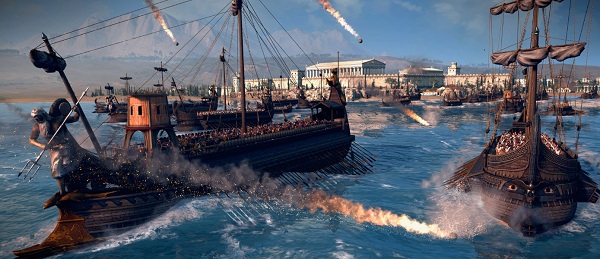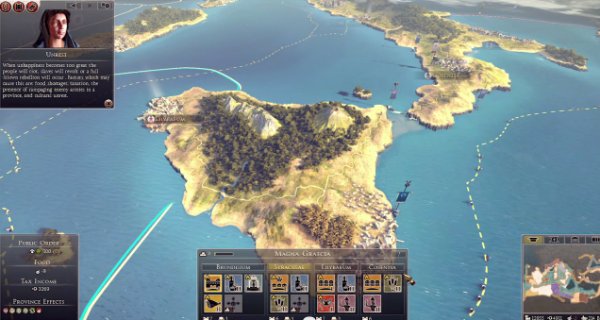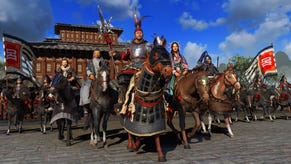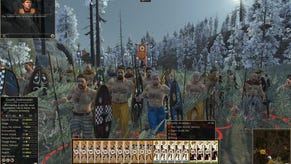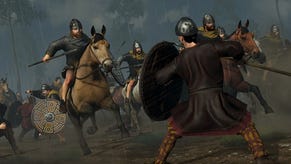Hands On: Total War – Rome II
Oh! What a lovely Total War
Sit me in front of a solid strategy game for a few hours and I'll ask you to give me a few hours more. I visited Rome recently to play Total War: Rome II. It's not that Total War games live in Rome, but it was an amusingly appropriate location to host what appeared to be 99% of Europe's gaming press. After two hours with the game and half an hour talking to the developers, I packed my bags and went to sit in a hotel, wishing that I had those few hours more. Thankfully, after the trip I received a preview code, so two hours turned into many. As a lapsed admirer of the series, I waited for Rome to suck me back in.
Your PC is brilliant. Give it a quick kiss while nobody’s looking. That’s provided you’re reading this on the monitor rather than squinting at a CleverPhone while hunkered in a pub toilet, ankle-deep in beery leavings and surrounded by the literary genius of a thousand wall-scrawlers. If you are there, tipsy or flat-out drunk, go home this instant and give your PC a big cuddle. It misses you and it deserves your love.
Total War: Rome II is one very good reason to maintain that loving relationship. You may be aware that there are two new consoles approaching retail, each already wrapped in its own peculiar branding and consumer mythology, but no matter how loud and detailed their explosions, they’re never going to turn too many heads from glowing monitors.
Creative Assembly have made a game with so many graphics, with such incredible fidelity and scale, that it puts every future-generation explosion and racing car to shame. And it’s a STRATEGY game. Now, can be quite curmudgeonly about this sort of thing - a strategy game should wear a sturdy cloth map and very little else, but playing Rome, as it strutted around like a peacock, flexing its tailfeathers, I was inclined to applaud vigorously.
That it’s a beautiful game capable of dropping jaws has been clear for a while now but I refused to be won over by all of the on-screen camels, men and elephants. I’m glad that the battles are as attractive as a neodymium magnet, but I’ve been craving a glimpse of that cloth undergarment – the campaign map. Earlier this month, I spent a couple of hours with the game’s prologue, a tutorial/introductory scenario, and had the chance to explore a small, Italy-only, slice of that map. What I saw pleased me enormously.
First, some bad news. Not bad news about the game, but about the limits of what I did and didn’t see. I played at a preview event (playing Rome on the set of HBO’s Rome, just outside the city of Rome) but also received code of the same prologue build to tinker with at home, so I’ve explored what is available thoroughly. It only allows the player to control Rome, in the earliest of days, and only contains a limited region of the map. The beginning is heavily scripted – lift this siege, attack this city, hire a new general – but there’s just enough room for experimentation as regards city and army construction.
Diplomacy isn’t an option though. The mini campaign is about squashing the Samnites and consolidating Roman power. There’s nobody to talk to, except for advisors and generals, because the world is made of enemies. Total war indeed. A shame, because diplomacy is one of the areas I’m most interested in exploring, but I still managed to discover a great deal while clicking on everything in sight.
It’s a more character-based game than any Total War before it, and not just in terms of the people under the player’s command, but also the cities and armies that they control. Choosing which buildings to construct allows a settlement to specialise, its growth depicted on the map as it stretches across the province, filling space with distinct structures and a style of its own. The differences aren’t simply cosmetic though – even in these early days of Roman rule, the player is shaping the demeanour and direction of the city, and thereby the empire.
Eventually, it will be possible to see the influence of the Empire, or any other band of miscreants with enough power, changing the image of the known world. Captured cities can be culturally converted, their buildings torn down and rebuilt in the style of a new ruler. And cities will be seized. To my great embarrassment and delight, the AI managed to scupper my plans during the tutorial. I’d planned a combined land and naval assault on a city just down the coast, confident of success and eager to command a large selection and variety of troops. A few defenders stayed behind, even though repelling my superior forces was surely impossible. Others abandoned the city, perhaps to bolster the line at my next point of conquest, in a mountain pass.
Except that wasn’t their plan at all. They headed inland and out of sight and the next thing I knew, they’d reappeared on the road to Rome. I’d been outsmarted – admittedly, it happened primarily because I wasn’t BEING particularly smart, playing with as many toys as possible rather than keeping an eagle eye open for impending disaster. Still, I was reassured that the AI acted so aggressively. In battle, it surprised me a couple of times, although not without displaying the occasional bout of passivity and confusion that will be familiar to anyone who has played a Total War game before. The enormous variety of units and increased number of battle types should keep things somewhat unpredictable for a long time though.
The battles are utterly absorbing though. It helps, of course, that they are as impressive in the zoomed in detail of a camel’s blinking eye as they are from on high, where units are like pools and streams of ants, swarming toward one another and leaving only corpses and ruin. The magnitude of even the early stages is staggering and the nitty-gritty of positioning and formations sucked me straight back in.
I say ‘back in’ because I took a hiatus from Total War. I’ve played a good deal of Shogun 2 but the setting doesn’t grip me in the same way that Medieval and Rome did. Empire was never even a passing fancy. Rome, for obvious reasons, feels like a homecoming for the series, but perhaps the most intimidating and brilliant aspect of the game is that it isn’t really a Rome game at all. It can be, if that’s what you want it to be, but it’s also a larger beast, a Classical Era strategy game with diverse cultures and possibilities.
There will be more scope than before for the kind of alternate history shenanigans that grand strategy games cook up so well. Want to build a Germanic empire that stretches from the forest of the north to the south tip of Italy’s old boot? I’d certainly hope you do. How about an Egyptian Kingdom that survives, as a world power, crushing Rome and enslaving its people? Sounds like a challenge.
Interweaved throughout these tales of triumph and terror are the stories of individuals, whether they be soldier, general or politician. Legions have their data tracked, so the city and general that founded them can become legend should their deeds inspire the singing of songs and heroic mythologizing. This gives those legions (or armies, in other cultures) traits, influencing their methods and identity, causing opponents to react to their reputation, even though it may have been forged a century before. Their character can change over time but it outlives the soldiers and even the general at their head, lending every battle a more personal touch.
Politicians, true to form, cause problems. At worst, these can result in rebellion or civil war, particularly if one of the aforementioned legions becomes so awe-inspiring that a poisonous whisper can turn its general’s head to higher aspirations. The intelligence of the interplay between systems should keep player’s in doubt, always wary of allowing a legion and its general to become too fearsome lest he believe that the ruler of Rome himself should have cause to fear. The possibility of a rogue legion marching on the capital, as an emergent rather than scripted event, is more exciting to me than a hundred perfectly modelled elephants rampaging through a burning city.
There are deeper levels still. Generals have an entourage, made up of companions that range from hunting dogs to seers, and from strategists to floozies. It’s not entirely clear whether they simply add a buff to certain skills or whether they will lead to textual events with decisions to make. There will be plenty of the latter though, with choices affecting a general’s confidence, skills and standing.
Watching all the videos that have been released, showing off historical battles and factions, I was beginning to think Creative Assembly had a reason to hide the campaign. I can’t deny the spectacle of those battles but I’ve been waiting to see what’s behind them. Now that I have, there’s the promise of a game that hasn’t just had a facelift to impress the world, but that has improved significantly where it really matters – in the nature of its long-term strategic decisions, character and cultural portrayals, and imaginative potential.
The Emperor has some fancy new clothes, it’s true, but he’s also got a hell of a body. I can’t wait to get my hands on the rest of it.
Total War: Rome II is out on September 3rd. We'll publish an in-depth interview with the developers shortly, in which lots of very clever things are discussed and then I ask about Warhammer and somebody says 'no comment'.

